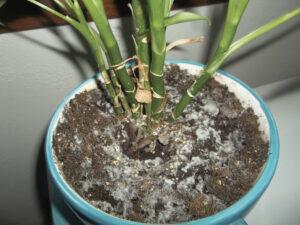 Allergy symptoms are caused by your immune system’s reaction upon coming into contact with an allergen. There are many allergens that can be found within your home. Many people have allergies, which are hard enough to battle when you encounter allergens outside, so what do you do when you are living with your allergens twenty-four hours a day, seven days a week? First, track when you start experiencing symptoms, note what you may be around at the time, and look for signs of allergens in your home. You likely know about the common substances, such as mold, pollen, dust mites, and pet dander. What about the ones you do not know about? The following things within your home may be the cause of your allergy symptoms.
Allergy symptoms are caused by your immune system’s reaction upon coming into contact with an allergen. There are many allergens that can be found within your home. Many people have allergies, which are hard enough to battle when you encounter allergens outside, so what do you do when you are living with your allergens twenty-four hours a day, seven days a week? First, track when you start experiencing symptoms, note what you may be around at the time, and look for signs of allergens in your home. You likely know about the common substances, such as mold, pollen, dust mites, and pet dander. What about the ones you do not know about? The following things within your home may be the cause of your allergy symptoms.
Perfume or fragrance is an allergen that affects many people. Fragrances may be hidden within cleaning products, skincare products (such as soaps and oils), cooking fuel, disposable diapers, sanitary products, facial tissues, and toilet paper. Did you know that natural fragrances could also be a problem for many people? For example, chamomile tea has a strong scent and can cross-react with ragweed. The proteins within chamomile are similar to those in ragweed, which is highly allergenic; if you are allergic to ragweed, chamomile may also cause a reaction.
Formaldehyde is in many household items. Adhesives, cosmetics, deodorants, detergents, fertilizers, paints, plastics, and textiles are all common products that often include formaldehyde in their ingredients. Even some gelatin capsules that hold vitamins contain formaldehyde, so if you have symptoms, pay close attention to when you are around products that may have formaldehyde in them. Take extra steps to limit these items in your home. Formaldehyde can cause insomnia when you have a reaction to it. If you have insomnia, try removing polyester or cotton sheets, as these are often covered with permanent press formaldehyde resin.
 Cockroaches are very common in older homes, in crowded urban areas, and in a warm climate area. Cockroaches like moist places where food is available. When they die, their bodies dry up and break apart; these pieces can become part of your house dust and cause allergic reactions. If you have noticed cockroaches in your house, they may be causing your allergy symptoms. Most people have had a run in with a cockroach at some point in their lives and know how tricky it is to get rid of them. An exterminator may be necessary depending on the extent of the infestation or if you just do not want to do it yourself. Otherwise, insecticides are helpful. Also, use glue strips in places where you think they might be hiding to identify the problem area. Once you find out where that is, get rid of the hiding place if possible and remove the food and water sources.
Cockroaches are very common in older homes, in crowded urban areas, and in a warm climate area. Cockroaches like moist places where food is available. When they die, their bodies dry up and break apart; these pieces can become part of your house dust and cause allergic reactions. If you have noticed cockroaches in your house, they may be causing your allergy symptoms. Most people have had a run in with a cockroach at some point in their lives and know how tricky it is to get rid of them. An exterminator may be necessary depending on the extent of the infestation or if you just do not want to do it yourself. Otherwise, insecticides are helpful. Also, use glue strips in places where you think they might be hiding to identify the problem area. Once you find out where that is, get rid of the hiding place if possible and remove the food and water sources.
Metals are prevalent in your household and can be found in many items. If you notice rashes where your jewelry rests on your skin, you may need to buy jewelry of a higher quality or switch to a different metal. Your cell phones and tablets are also dangerous for people with metal allergies. You may find rashes on your hands, ears, and side of your face; this is a huge indicator that your phone is causing your allergic reaction. Those devices also collect germs and dust from everywhere you take them and everything that touches them. Clean your phone often and buy a nonmetal phone case.
 Mold is a threat in any household, but there are areas in your home you would not think it is growing. Plants with big leaves and no flowers are recommended to filter your air and keep pollen out of it. However, the soil used for your plants can harbor mold spores, a very common allergen, if not properly maintained. Mold can also grow on leaves that hold a lot of moisture. To prevent this, put your plant in the sun every so often so it has time to dry between waterings. Also, dehumidifiers are used to prevent mold and dust mites in your home, but did you know that mold could grow in the dehumidifier itself? If you do not properly clean or empty the unit that’s collecting the moisture from your environment, it may grow mold without your knowledge.
Mold is a threat in any household, but there are areas in your home you would not think it is growing. Plants with big leaves and no flowers are recommended to filter your air and keep pollen out of it. However, the soil used for your plants can harbor mold spores, a very common allergen, if not properly maintained. Mold can also grow on leaves that hold a lot of moisture. To prevent this, put your plant in the sun every so often so it has time to dry between waterings. Also, dehumidifiers are used to prevent mold and dust mites in your home, but did you know that mold could grow in the dehumidifier itself? If you do not properly clean or empty the unit that’s collecting the moisture from your environment, it may grow mold without your knowledge.
With this knowledge of allergens that could be harmful to you in your household, you are on your way to creating a cleaner and safer environment for those in your family with allergies. Your home is where you should feel happy, relaxed and safe, not burdened with symptoms from your allergies. Be on the lookout for where allergens could be hiding in your home, and do your best to eliminate them. Everyday household items could be the culprit, but with proper caution and care you can be on your way to a relaxing and comfortable household. ![]()
Kamilah Williamson
Home & Yard Magazine




